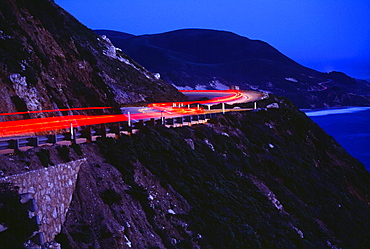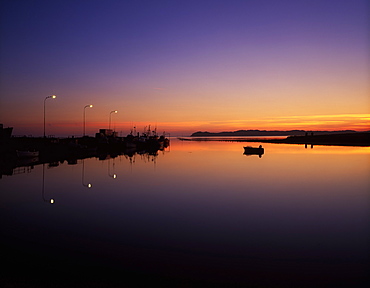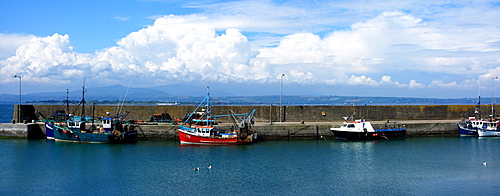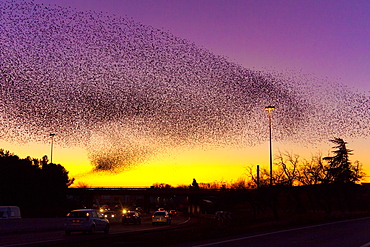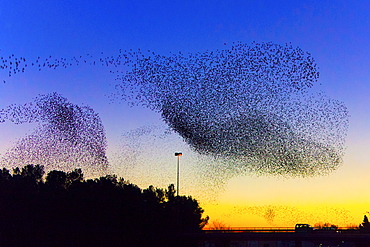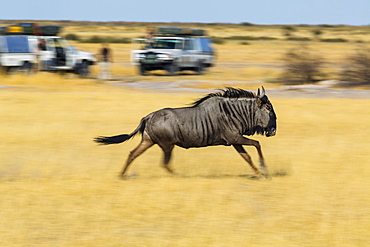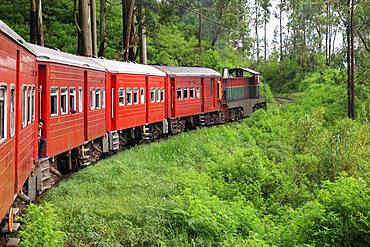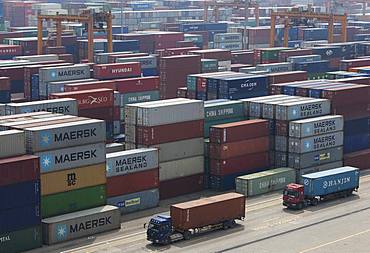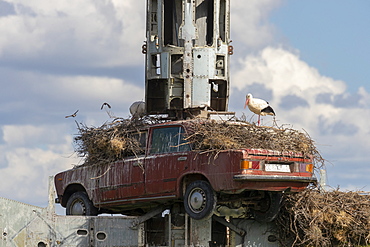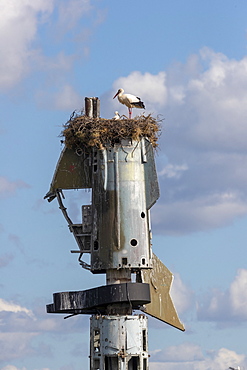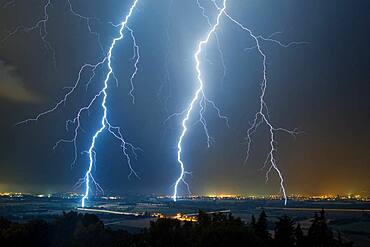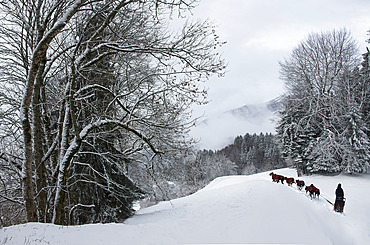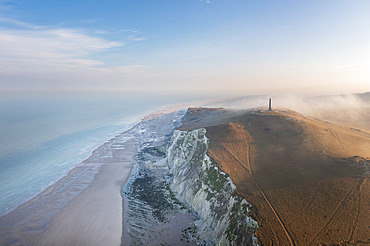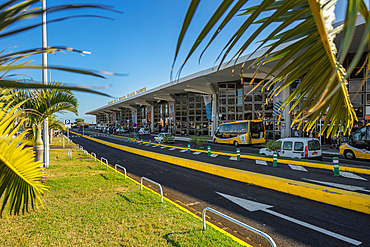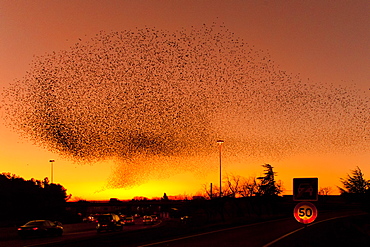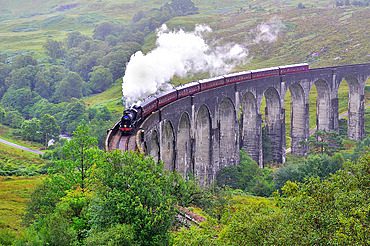Results
4 results found
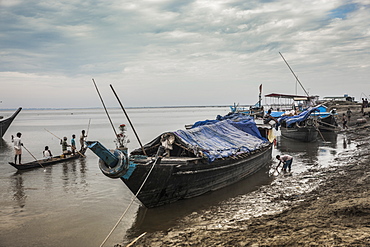
The ferry, the only mode of transport for all sorts of commodities in and out of Majuli Island, Brahmaputra River, Assam, India, Asia
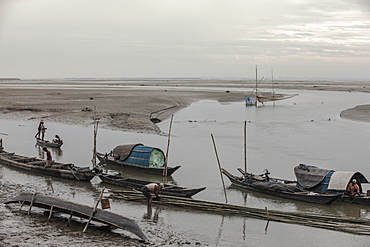
The ferry, the only mode of transport for all sorts of commodities in and out of Majuli Island, Brahmaputra River, Assam, India, Asia

Commercial airplane parked in airport park at sunset, refuelling in taxi mode, United States of America, North America
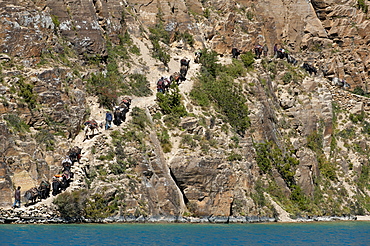
Yaks, the local beasts of burden and the principal mode of transport, bringing supplies into Dolpa, a remote region of Nepal, Himalayas, Asia
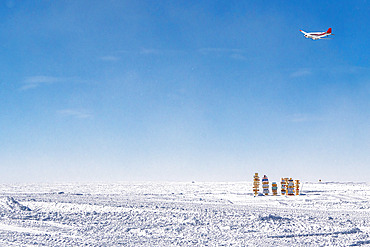
A few weeks after the start of the summer campaign, the winterers who have just spent 14 months at Concordia return home. They take off from Concordia station aboard the Basler;photo), bound for Mario Zucchelli or Dumont d'Urville. Most of them make a sign indicating the village or town where they live, and the distance to Concordia. Concordia Antarctic Base

Savines bridge on Route Nationale 94 over Lac de Serre-Poncon (aerial view), Savines-le-Lac, Hautes-Alpes, France
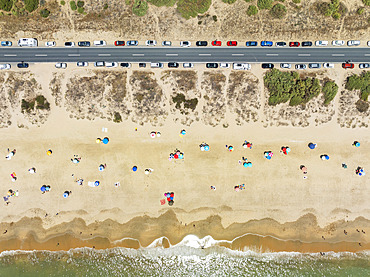
Beach life at the Atlantic Ocean near Punta Umbria. Aerial view. Drone shot. Huelva province, Andalusia, Spain.
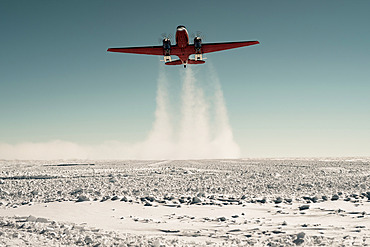
The aircraft;DC-3 Basler) takes off from Concordia's snow-covered runway. Take-off of a Basler at Concordia. The runway is groomed very evenly to minimise the micro-relief on its surface and make it easier for the aircraft to take off. The aircraft are equipped with landing gear allowing them to land alternatively on a ?hard? runway or on snow: retractable skis controlled from the cockpit are fitted to the two front landing gears. Concordia Antarctic Research Station, Dome C plateau, East Antarctica.
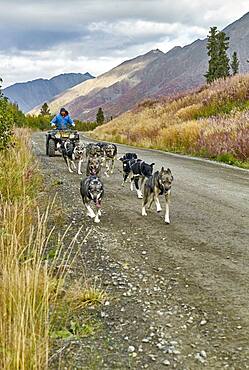
Musher preparing and training his dogs in autumn for the Iditarod. Denali Highway: Paxson to Cantwell, Alaska
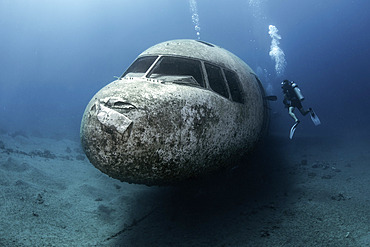
Werck. Lockheed L-1011 TriStar three-engine plane intentionally sunk in 2019. In addition to being a great attraction for divers, these sunken structures;generally ships, but also planes, military vehicles...) become artificial reefs helping in the repopulation of the underwater bottoms. This wreck is located in the Red Sea, at a depth of between 18 and 31 meters. Aqaba, Jordan.

The airbus A320 landed on the pack ice of Terra Nova Bay, where the Mario Zucchelli base is located. Beneath its wheels lay 1.3m of ice and 300m of ocean. Victoria land, Antarctica
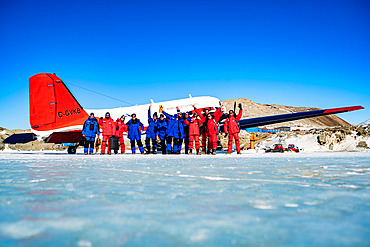
The expeditionaries bound for Cap Prud'Homme and Dumont d'Urville, in front of the Basler that will take them there. It's worth noting that some of them are wearing the blue garment normally worn for Concordia: this is because it's warmer and contains more down, which is no luxury at the start of the summer season. A matter of habit and personal preference. The buildings of the Mario Zucchelli base can be seen in the background. Terra Nova Bay, Victoria Land, Antarctica
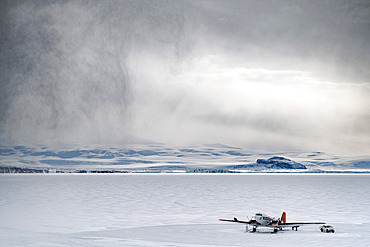
The Basler, stationed on the Terra Nova Bay ice floe in front of the Mario Zucchelli base. The mechanics take advantage of a rare lull to carry out routine maintenance. The aircraft is strapped to the ground. A squall arrives from the left. Victoria Land, Antarctica
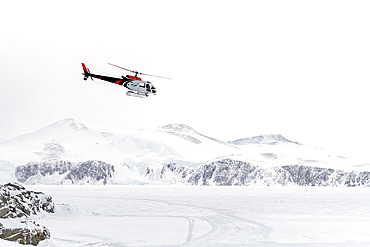
A German BGR helicopter used in Terre Victoria to transport geologists to specific research points. These are one-off scientific programs, involving the collaboration of several countries, in this case Germany and Italy. The Germans set up a base camp several dozen kilometers from the Italian Mario Zucchelli station, using Italian logistical resources such as the Laura Bassi icebreaker to transport the helicopter, the equipment needed to set up the base camp, scientific equipment and, of course, personnel. All of this was delivered to the Mario Zucchelli station for onward transport by helicopter to the search site. Victoria Land, Antarctica
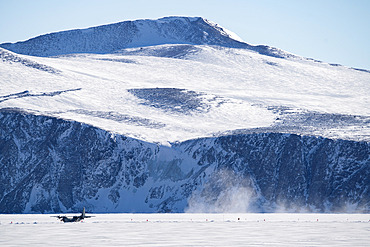
A Lockheed C-130 Hercules on loan from the Italian Air Force for logistics operations between Christchurch;New Zealand) and the Mario Zucchelli base. Although military activities are strictly forbidden in Antarctic territory by the Treaty of Madrid, polar-operating countries frequently use the skills and equipment of their armies for polar logistics. Victoria Land, Antarctica
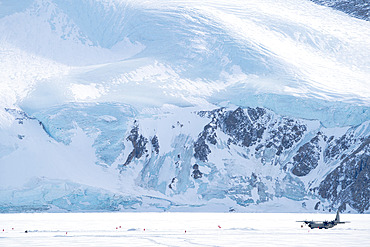
The Lockheed C-130 Hercules prepares to take off from the runway built on the sea ice in Terra Nova Bay, where the Mario Zucchelli station is located. Victoria Land, Antarctica

Bengal tiger;Panthera tigris tigris), walking on a track, Jim Corbett National Park, Uttarakhand, India, Asia

Technicians loading/unloading cargo/freight from the supply plane at Concordia. French;in blue) and Italian;in red) technicians help unload the Basler - Douglas DC3, which delivers scientific and/or technical equipment to the Concordia station several times a month during the summer. It takes a team of 6 to 20 people just 3 minutes to unload the 2 tonnes of cargo, reload the same amount of equipment into the plane and refuel the aircraft with kerosene. As soon as these operations are completed, the plane is ready to leave again. Concordia Antarctic Research Station, Dome C plateau, East Antarctica.

Concordia staff on their knees helping a person lying on a stretcher. Helped by a snowmobile. Rescue exercise in the event of an accident involving several victims. These frequent exercises are supervised by the doctor. All the resort's winter residents are assigned a very specific role in the event of an accident, illness or fire. A redundancy system allows this system to function in the event of one or more winterers failing to respond. Concordia Antarctic Research Station, Dome C plateau, East Antarctica.

Congestion of waiting transport ships off the coast of Singapore, during the post-covid international shipping crisis.

Werck. Lockheed L-1011 TriStar three-engine plane intentionally sunk in 2019. In addition to being a great attraction for divers, these sunken structures;generally ships, but also planes, military vehicles...) become artificial reefs helping in the repopulation of the underwater bottoms. This wreck is located in the Red Sea, at a depth of between 18 and 31 meters. Aqaba, Jordan.
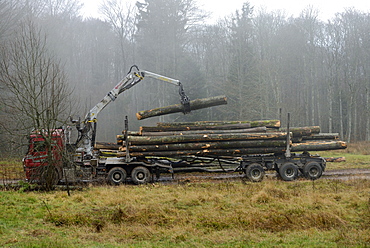
logging truck loading of beech logs , above Hohwald, between the Col de la Charbonnière and Champ du Feu, High Vosges, Alsace, France
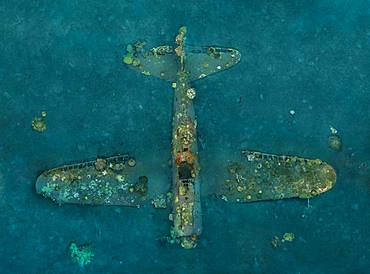
Tara Pacific expedition - november 2017 Zero wreck, vertical view Orthomosaic from 3D photogrammetry (13500 x 10000 px). D: 15 m Kimbe Bay, papua New Guinea, Coral growth on this wreck is from a period of 74 years ! The ZERO, is a Japanese WW2 fighter plane wreck. This Zero wreck was discovered in January 2000 by local William Nuli while he was freediving for sea cucumbers. He asked the Walindi Plantation Resort dive team if they might know what it was, and when they investigated they uncovered the intact wreck of a Zero fighter, resting on a sedimented bottom in 15 m depth. This World War II Japanese fighter is almost completely intact. The plane is believed to have been ditched, the pilot is believed to have survived, but was never found on the island. He never returned home. Maybe he disappeared in the jungle? On 26th December 1943, during the battle of Cape Gloucester, the Japanese pilot made an emergency landing, ditching his Mitsubishi A6M Zero plane into the sea approximately 100m off West New Britain Province. The plane was piloted by PO1 Tomiharu Honda of the 204st K?k?tai. His fate is unknown but it is believed the he made a controlled water landing after running out of fuel and survived. Although he failed to return to his unit, the plane was found with the throttle and trim controls both set for landing and the canopy was open. There are no visible bullet holes or other shrapnel damage and the plane is still virtually intact after over 70 years underwater. It is a A6M2 Model 21 Zero, made famous for its use in Kamikaze attacks by the Japanese Imperial Navy. The wreck has the Manufacture Number 8224 and was built by Nakajima in late August 1942.

Tara Pacific expedition - november 2017 Kimbe Bay, papua New Guinea, Zero wreck: Coral growth on this wreck is from a period of 74 years ! D: 15 m The ZERO, is a Japanese WW2 fighter plane wreck. This Zero wreck was discovered in January 2000 by local William Nuli while he was freediving for sea cucumbers. He asked the Walindi Plantation Resort dive team if they might know what it was, and when they investigated they uncovered the intact wreck of a Zero fighter, resting on a sedimented bottom in 15 m depth. This World War II Japanese fighter is almost completely intact. The plane is believed to have been ditched, the pilot is believed to have survived, but was never found on the island. He never returned home. Maybe he disappeared in the jungle? On 26th December 1943, during the battle of Cape Gloucester, the Japanese pilot made an emergency landing, ditching his Mitsubishi A6M Zero plane into the sea approximately 100m off West New Britain Province. The plane was piloted by PO1 Tomiharu Honda of the 204st K?k?tai. His fate is unknown but it is believed the he made a controlled water landing after running out of fuel and survived. Although he failed to return to his unit, the plane was found with the throttle and trim controls both set for landing and the canopy was open. There are no visible bullet holes or other shrapnel damage and the plane is still virtually intact after over 70 years underwater. It is a A6M2 Model 21 Zero, made famous for its use in Kamikaze attacks by the Japanese Imperial Navy. The wreck has the Manufacture Number 8224 and was built by Nakajima in late August 1942.
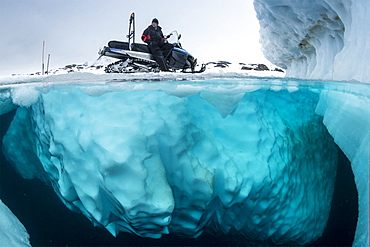
Split image of guide with snowmobile waiting the divers, only in springtime, when the hard winter slowly subsides, are the ice-cold waters suitable for divers who can dive around a iceberg that floats in crystal-clear water, Tasiilaq, East Greenland
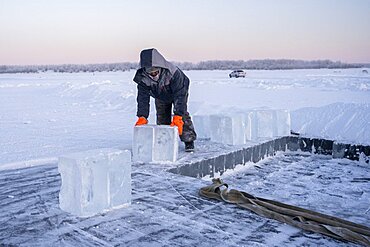
Extraction of ice cube from the Lena river for use as drinking water by residents without access to running water, Yakutsk, Republic of Sakha, Russia
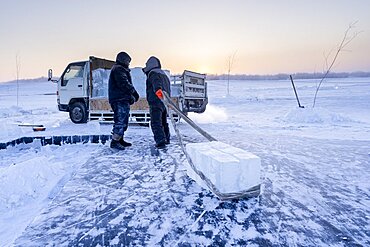
Extraction of ice cube from the Lena river for use as drinking water by residents without access to running water, Yakutsk, Republic of Sakha, Russia

Landscape of Svalbard in Norway, also known as Spitsbergen. This territory stretches from latitude 75 to 80 degrees to the pack ice a few hundred kilometers from the North Pole. Melting ice, early global warming. Baie de la Madeleine here, a coastal landscape rising to 80 degrees latitude, where blocks of ice and small icebergs detached from glaciers drift on the water. Old steam train in front of Ny-Alesund weather station
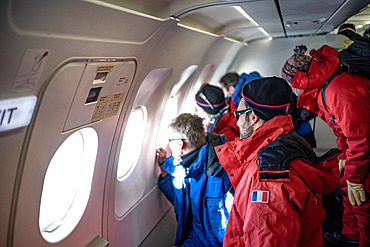
Team of Antarctic expeditionaries watching the landscape through the windows of the Airbus A320 carrying them from Hobart;Tasmania) to Mario Zucchelli;Italian coastal Antarctic base), as they approach the latter. These are the first summer campers. In red are those who will then take a Basler to the French coastal summer station of Cap Prud'Homme or Robert Guillard. They'll spend a few days opening it up and warming it up, before moving on to the Dumont d'Urville base;6km from Cap Prud'Homme), marking the end of wintering there. In blue: the expeditionaries bound for Concordia.


